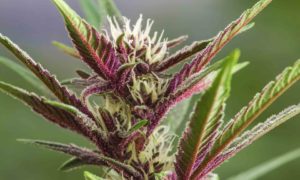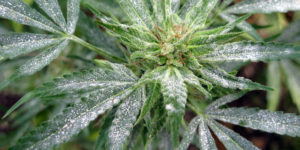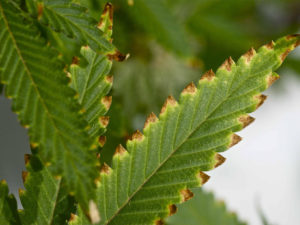 Growing marijuana in your own property may be legal but it isn’t that easy. Like many other flowers and vegetables common in a Colorado garden, cannabis cultivation comes with its own set of hurdles including viruses, contaminants and other stressors (and a fair share of cannabis pests, too), which must be remedied quickly and thoroughly in order to reap a quality harvest. Waiting too long to nip marijuana grow problems in the “bud” can result in damaged crops, weak harvests and otherwise dirty weed.
Growing marijuana in your own property may be legal but it isn’t that easy. Like many other flowers and vegetables common in a Colorado garden, cannabis cultivation comes with its own set of hurdles including viruses, contaminants and other stressors (and a fair share of cannabis pests, too), which must be remedied quickly and thoroughly in order to reap a quality harvest. Waiting too long to nip marijuana grow problems in the “bud” can result in damaged crops, weak harvests and otherwise dirty weed.
With grow season in full-swing, we’ve decided to list some of the most common, non-pest problems with growing weed – and how to fix them – so that your marijuana grow will be a success.
Powdery Mildew

- Identifying Powdery Mildew: Powdery mildew can be identified by its powdery white appearance on leaf surfaces. This fungus spreads quickly through the air and can attach itself to your cannabis plants especially following a lengthy wet spell.
- Problems Caused by Powdery Mildew: Though powdery mildew only affects the plant’s surface, its ability to spread quickly and block out the sun can cause significant damage to the plant and may ultimately cause plant death if not properly treated. Inhaling or otherwise ingesting mildew can also cause respiratory problems or allergic reactions in some people so it’s best to avoid it whenever possible.
- How to Remedy/Prevent Powdery Mildew: It’s important to act fast at the first sign of powdery mildew to avoid it spreading to other plants. Some common DIY methods to use include diluted apple cider vinegar, a baking soda solution or a milk and water mixture. Also remember to provide plenty of “breathing room” for your plants and remove any plants with excessive contamination immediately.
Tobacco Mosaic Virus
- Identifying TMV: The Tobacco Mosaic Virus is a virus that affects many plants including cannabis, tomatoes, spinach and marigolds and can spread easily through pollination, contaminated soil or insect carriers. It can be tricky to identify because of its resemblance to nutrient deficiencies like yellow, wilting or distorted leaves.
- Problems Caused by TMV: Aside from stunted growth caused by the plant’s inability to efficiently process UV light, TMV, like any virus, can quickly spread causing an abundance of cross-contamination. The virus can remain dormant for years in soil, carpet, seeds, tobacco products or infected plants and may only begin showing signs after the plant has experienced some form of stress (transplanting, pruning, light or nutrient problems, for example).
- How to Remedy/Prevent TMV: Unfortunately, once a plant has TMV it will always be contaminated which is why it is important to grow in completely sanitary conditions when possible (like washing hands after a smoke) and to always keep an eye out for signs. Should a plant show signs of TMV, it is imperative that the plant be removed from the grow area immediately. If you are unsure whether your plant has TMV, place it in quarantine while running other tests like flushing out the soil and cleaning the foliage. If your plant does not recover, dispose of it immediately.
Nutrient Deficiencies
- Identifying Nutrient Deficiencies: Like all living things, cannabis plants need proper nutrition to thrive. This often involves supplementing nutrients with cannabis-friendly fertilizers and soil modification, but can still leave plants weak and unattractive if administered in improper amounts. Nutrient deficiencies are characterized by the yellowing or browning of leaves, red stems, spots or otherwise inconsistent coloring. On the flip-side, over-fertilized plants may display signs of burning or yellowing, as well.
- Problems with Nutrient Deficiencies: When plants don’t receive proper nutrients, growth may be slowed, plants may become susceptible to infection or may just die off completely.
- How to Remedy/Prevent Nutrient Deficiencies: Nutrient deficiencies are often the result of an improper pH balance. For example, while most nutrients are more readily absorbed in soil with a neutral pH, others like iron, manganese, copper, zinc and boron prefer more acidic soil. If nutrient deficiencies are an issue, adjust your pH and nutrient regimen promptly. If the issue is over fertilization, simply flush the soil with pure water, wait for your plant to regain strength and try again at a lower level.
Stress-Related Problems
- Identifying Stress-Related Problems: Three common stress-related problems cannabis plants experience include root rot (which is caused by overwatering), root bound (which is caused by growing plants in containers that are too small) and heat stress. These issues can be identified by foliage discoloration, curling leaves, brown roots or fowl-smelling run-off water.
- Problems with Stress: Not only can stress cause plants to wither and die, it can turn female cannabis plants hermaphroditic (you’ll get seedy weed). If your girls show signs of stress, calm them down immediately.
- How to Remedy/Prevent Stress: To avoid root rot, grow your plants in well-draining soil and make sure there are drainage holes at the bottom. Prevent or remedy root bound plants by transplanting in large pots (preferably with a three-gallon capacity minimum for the full cycle) and prevent heat stress by maintaining a grow environment temperature at roughly 75 degrees Fahrenheit.
